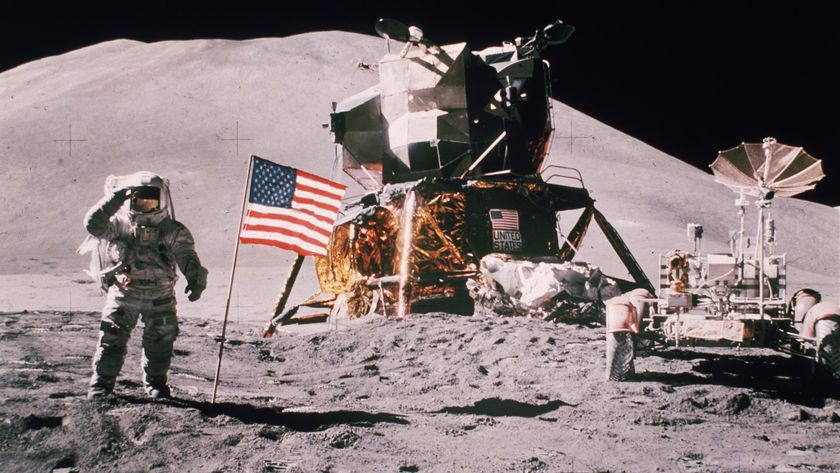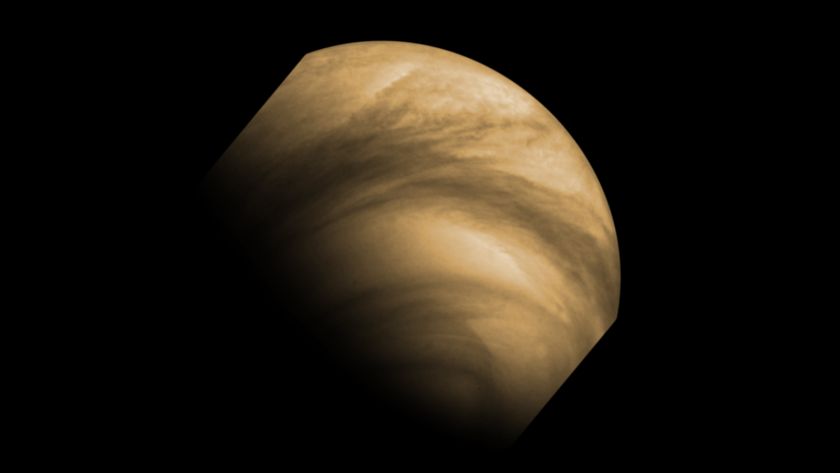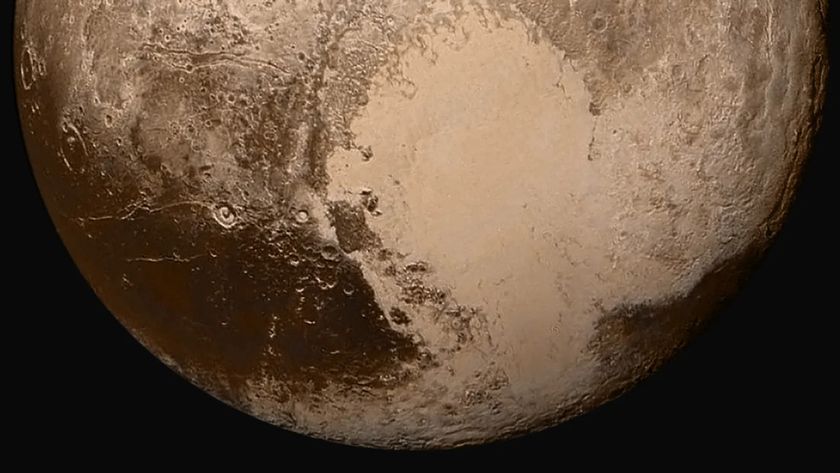NASA wants a 'Super-Hubble' space telescope to search for life on alien worlds
"The question 'Are we alone?' is one of the most significant questions, not just in the history of science, but in the history of humanity."
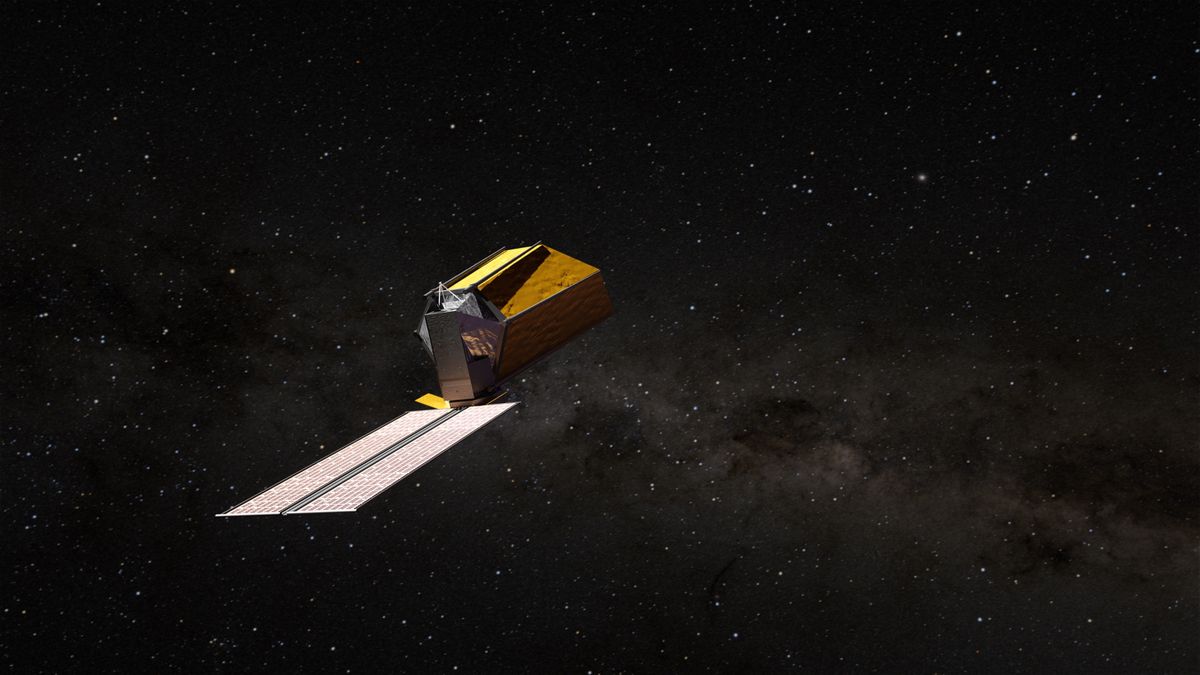
NATIONAL HARBOR, Md. — When a boy named Elliott found an alien in the classic 1982 film "E.T." it offered easy answer to the question on every astronomer's mind: Are we alone in the universe? In reality, however, scientists have yet to solve that query.
That could soon change, thanks to a new NASA flagship telescope being designed to seek out strange new worlds that could support life as we know it. Called the Habitable Worlds Observatory, the telescope is so massive it may even need to ride a next-gen megarocket like SpaceX's Starship to reach space; it will also require new technological innovations to hunt for Earth's twin across the light-years. Yet, even with such hefty demands, this project was tapped as a top priority for NASA in the Decadal Survey on Astronomy and Astrophysics 2020 (Astro2020), an influential report that aims to set a roadmap for the astronomy community within the decade following its release.
"The question 'Are we alone?' is one of the most significant questions, not just in the history of science, but in the history of humanity, and we are at the precipice of actually having the tools and technologies that are required to tackle this question in a rigorous and scientific fashion," Giada Arney, the interim project scientist for the Habitable Worlds Observatory, told a crowd of scientists during a plenary talk here at the 245th American Astronomical Society meeting on Wednesday (Jan. 15). "We might learn the answer to this question within our lifetimes, and the answer to that question is a discovery, the implications of which would ripple through future millennia."
Arney, a planetary scientist based at NASA's Goddard Space Flight Center in Greenbelt, Maryland, is working with a vast team of scientists to develop the Habitable Worlds Observatory into a powerful tool for astrophysics research and exoplanet discovery. Last summer, NASA opened a new program office at Goddard for the space telescope and announced it has earned $17.5 million in funding to explore some of the key technologies needed to bring the instrument to fruition. Now, the team is gearing up for a major science conference in late July to outline the science the Habitable Worlds Observatory could do.
"We're very early in the design phase of HWO," Arney said, using NASA's shorthand for the observatory. "We're still iterating through a number of design concepts, so we don't know exactly how HWO is going to look when it launches."
One thing is for sure, though: It's going to be big.
Lee Feinberg, HWO's principal architect based at Goddard, said in a separate presentation that NASA is currently envisioning a massive space telescope nearly 20 feet (6 meters) wide, and suggested it could get as large as 26 feet (8 m). The Hubble Space Telescope, for comparison, has a 6.5-foot (2 m) aperture, he said.
Get the Space.com Newsletter
Breaking space news, the latest updates on rocket launches, skywatching events and more!
Even the smallest version of HWO will need a huge rocket to haul it into space. Blue Origin's New Glenn rocket, which has a huge 23-foot (7 m) fairing, could fit the bill, Feinberg said.
"It would be really challenging to fit in that rocket from a mass perspective, but these are the kind of details that we're trying to understand," Feinberg said.
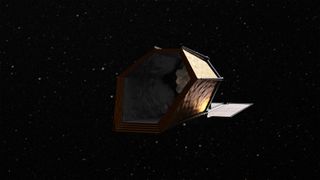
For larger versions of HWO, SpaceX's massive Starship — currently the world's tallest and most powerful rocket, with a nearly 30-foot (9 m) payload bay, is an option not just for launching the rocket, but also as a way to return to the observatory in space for periodic servicing, just as NASA space shuttle astronauts did with Hubble, according to early designs.
The space telescope will have four primary instruments, including a super-sensitive coronagraph that can detect Earth-size planets around distant stars. A prototype of its coronagraph should launch into orbit in 2026 on NASA's new Nancy Grace Roman Space Telescope. Current HWO designs call for the coronagraph, a high-resolution imager, an advanced spectroscope and a fourth instrument yet to be determined.
The current plan for HWO is to launch the observatory sometime between 2030 and 2040 to catalog at least 25 Earth-like exoplanet candidates for biosignatures, or signs that life that could be present on those worlds. The oxygen, methane and ozone of modern Earth are examples of possible biosignatures, Arney said.
If HWO successfully finds those signs of life, it would be a watershed moment for humanity's understanding of how common life might be in the universe. The reverse, however, is also possible. If HWO samples 25 exo-Earth candidates and comes up empty, that could be seen as the first "upper-limit" on the frequency of life beyond Earth, Arney said.
"HWO will either tell us we are not alone, if there are bio signatures that can be observed on an exo-Earth candidate orbiting a nearby star, or it will tell us for the very first time just how alone we are," she said. "Either answer would be profound, and either answer would change the way we see ourselves in relation to the rest of the universe."
Join our Space Forums to keep talking space on the latest missions, night sky and more! And if you have a news tip, correction or comment, let us know at: community@space.com.

Tariq is the Editor-in-Chief of Space.com and joined the team in 2001, first as an intern and staff writer, and later as an editor. He covers human spaceflight, exploration and space science, as well as skywatching and entertainment. He became Space.com's Managing Editor in 2009 and Editor-in-Chief in 2019. Before joining Space.com, Tariq was a staff reporter for The Los Angeles Times covering education and city beats in La Habra, Fullerton and Huntington Beach. In October 2022, Tariq received the Harry Kolcum Award for excellence in space reporting from the National Space Club Florida Committee. He is also an Eagle Scout (yes, he has the Space Exploration merit badge) and went to Space Camp four times as a kid and a fifth time as an adult. He has journalism degrees from the University of Southern California and New York University. You can find Tariq at Space.com and as the co-host to the This Week In Space podcast with space historian Rod Pyle on the TWiT network. To see his latest project, you can follow Tariq on Twitter @tariqjmalik.
-
ChrisA Yes, a negative result is informative. This is what SETI gave us. At one time people thought that if we had a sensitive radio telescope, we would hear a "galactic Internet" where all the civilizations of the galaxy communicate with each other. We now know there is no such thing as that. But there was a time when we did not know, so science advances. We know now that advanced civilization that uses radio is at least extremely rare or it is possible we are the only ones.Reply
It looks like now by the 2040s we will know if life itself is very rare or common.
My prediction: We will find the bacteria-like life is relatively common but more advanced live is very rare and we might be the only example of it. We might know in only 20 or 30 years -
Classical Motion When we zoom in on a planet, we see what was long ago. It could be broadcasting AM now, and we not know it for hundreds or thousands of years. If ever. It takes much power for long distance radio. A star's worth of power.Reply -
steamnut With better, and cheaper, access to space now, why not look at repairing Hubble again. It needs it's steering wheels replacing and the camera could be upgraded with better technology. The benefits would be realized quickly while we wait for the HWO - which may be never.Reply -
Wolfshadw Replysteamnut said:With better, and cheaper, access to space now, why not look at repairing Hubble again. It needs it's steering wheels replacing and the camera could be upgraded with better technology. The benefits would be realized quickly while we wait for the HWO - which may be never.
We no longer have the means of capturing the HST, nor the capacity to deliver and install updates to it.
-Wolf sends -
bolide Reply
What is 'now'?Classical Motion said:When we zoom in on a planet, we see what was long ago. It could be broadcasting AM now, and we not know it for hundreds or thousands of years. If ever. It takes much power for long distance radio. A star's worth of power. -
Classical Motion We can not detect what is being emitted from a star or galaxy now, at the present time. We have no idea of what this universe looks like at the present time. Only the distant past.Reply
Now is present time. Light is not instant. Actually it’s very slow compared to the distances observed.
This distance barrier can not be broken. Even with light.
For all we know the universe might be very dark at the present time. The only thing we have to suppose with, is our (mis)understanding of light. -
bolide The problem is that our understanding of events presupposes Absolute Time, that is, the idea that a given moment (like "the present time") occurs instantaneously throughout the universe.Reply
If we observe today the explosion of a star that is 1000 light years away, what event on earth is that explosion simultaneous with? -
Classical Motion Whatever happened on earth 1000 years ago.Reply
I haven’t read, heard or met a today scientist, who believes in absolute time. That’s why I am not a scientist. And that was 50 years ago. Time is an old argument for me.
For me the absoluteness of time is not like a blanket over the volume of this universe.
For me, time is a product and result of change. And change, is acceleration.
The only physical substance is e. So the RATE of time comes from the acceleration of e.
All objects have this same rate, but objects can be in different phases of that rate. But that phase shift is very limited and is modulated with interaction duration. And quickly synced. Atomic and chemical bonds and structures have the in phase rate of time.
A physical explanation of time. Complete supposition. -
Hevach Reply
We do have the parts we need to do this, they're just not all together and some aren't quite there yet. But it's close enough to be a definable problem with plausible solutions.Wolfshadw said:We no longer have the means of capturing the HST, nor the capacity to deliver and install updates to it.
-Wolf sends
Hubble has an IDA compatible docking plate left behind on its last service mission for the possibility of Orion or Starliner (I think it was still being called Orion Light then) coming back later. Dragon could dock to this but would block it's EVA port to do so, but a matching plate mounted in the trunk has been proposed to work around that.
The Dragon trunk large enough to carry most of the serviceable parts like gyros. It won't do for a major overhaul like was needed to fix the main mirror but Hubble doesn't need work like that anymore.
Polaris Dawn showed that in principle the vehicle can handle an EVA and the suits can handle the work. The open cycle life support system fell short but isn't meant to be used in a live mission.
Starliner is not EVA capable, Orion will likely never see orbital use like this, and crewed Dreamchaser's (it it ever flies) capabilities aren't known yet - it might end up being perfect or entire unable to even try. But Dragon has a clear path to walk.
Now the wet blanket, to be fair: Polaris Dawn showed that Dragon can handle the work in principle, but also that in practice it is still lacking in key ways that must be solved, and even previously solved problems can carry all kinds of surprises the second time. And Hubble, even on its last legs, is still very important. By no means do I think Hubble should be Dragon's first live service mission, and by no means should the mission be attempted at all until Hubble's successor is already operating, because barely having Hubble is better than having nothing. But even reduced to the third string by James Webb and Nancy Grace Roman, observation time is a deeply limited resource and there will be lines down the street to use Hubble as long as we can keep it going.
